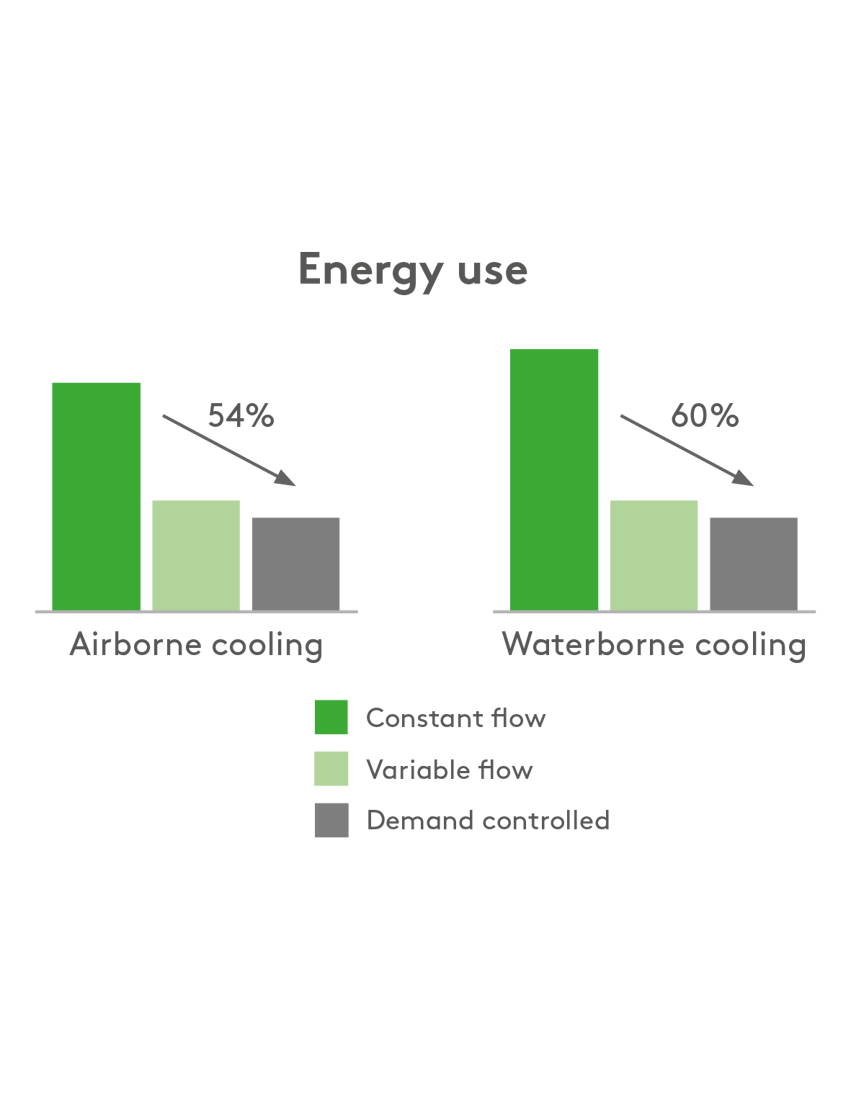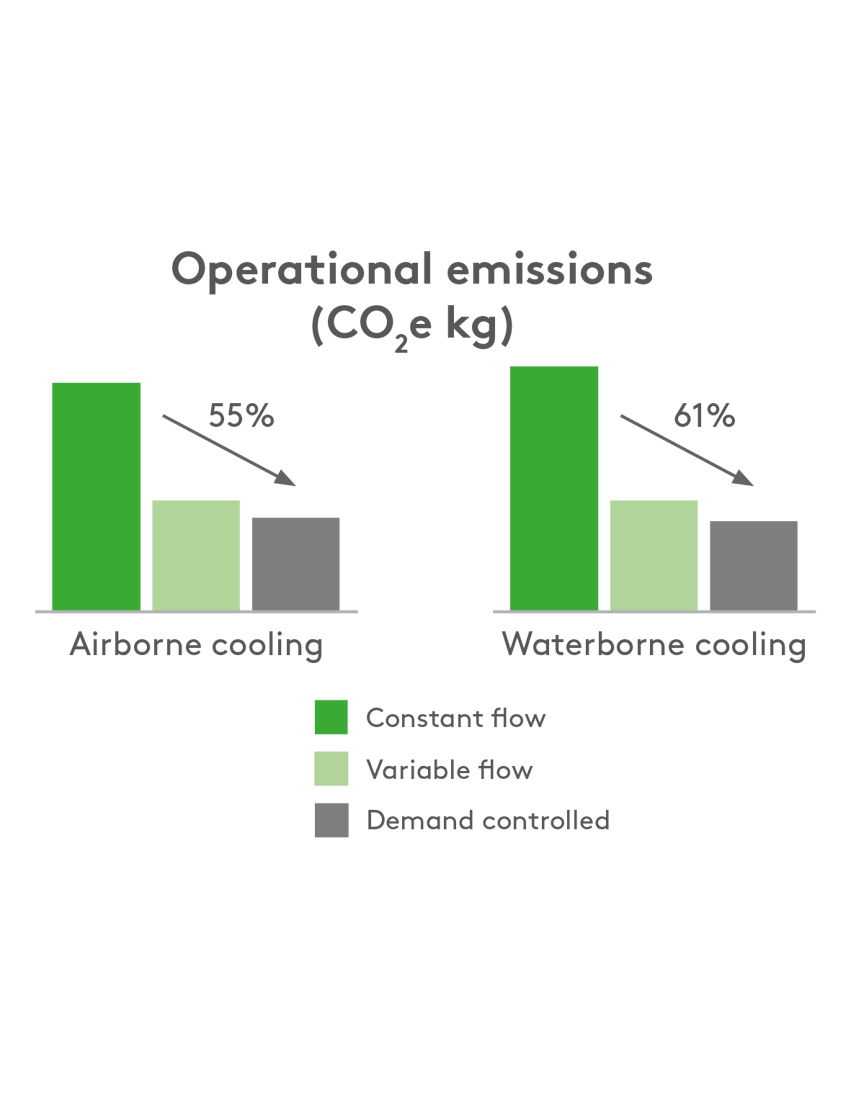Energy-efficient system choices for future buildings
Buildings in Sweden account for 34% of our total energy consumption, 77% of which is energy for heating.
In order to meet climate goals and future requirements for buildings, energy-efficient system choices are needed. Even today it is difficult to meet the Swedish National Board of Housing, Building and Planning’s requirements without some type of demand control.
With smart building technology choices for installations, automation and control systems, major savings can be made in areas such as operational energy consumption and emissions (CO2).
Calculation of energy consumption and emissions
In order to produce data and concrete comparisons, Swegon has made calculations for different types of systems. The conditions for our calculations can be viewed here.
The graphs below show the results for operational energy consumption and emissions (CO2e kg).


Make a difference with demand controlled indoor climate
Choosing the right ventilation system not only improves the indoor climate – it also makes a significant contribution to both the environment and reduced energy costs.
Energy savings
With a demand controlled ventilation solution, significant energy savings can be made. In fact, energy consumption can be reduced by up to 60%, depending on the design and control of the system. 60% energy savings for a building of 5,500 m2 corresponds to a cost saving of approximately SEK 245,000 per year (based on SEK 1.77/kWh which was the average cost in 2023).
Reduced CO2 emissions
Less energy consumption also means a lower climate footprint. With a demand controlled solution, CO2 emissions can be reduced by up to 61%, making it an effective way to contribute to a more sustainable future.
Energy savings in practice
Want to find out more?
At Swegon, we take our responsibility for reducing greenhouse gas emissions seriously. Through our energy-efficient solutions for heating, cooling and ventilation, we help to reduce building operating-related carbon dioxide emissions – thereby contributing to a more sustainable future.


